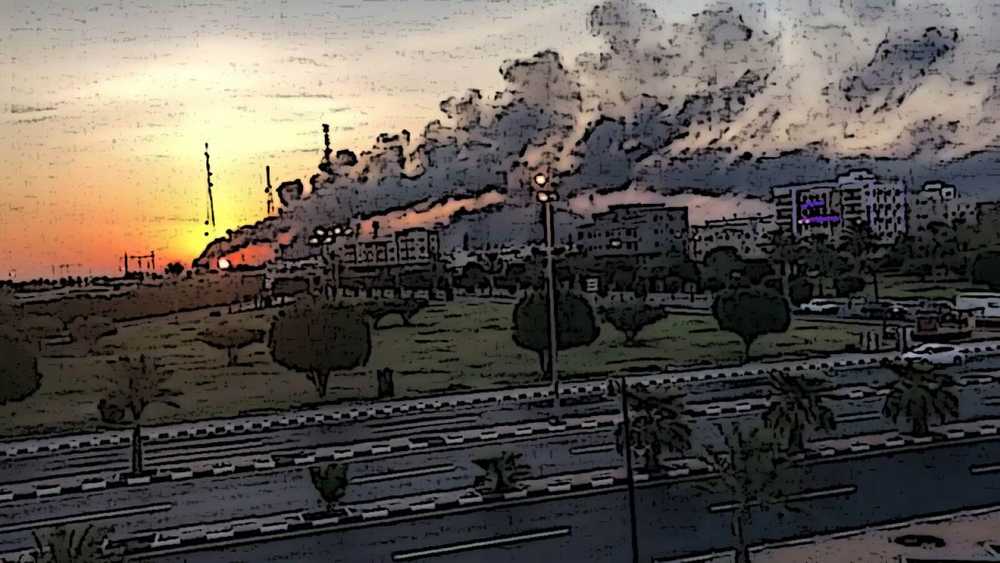Two weeks ago, an attack took place on various oil facilities in Saudi Arabia, cutting their oil production in half and therefore reducing global oil production by 5%. [1] The attack by drones and possibly cruise missiles were claimed by the Yemeni Houthi rebels (that are supported by Iran) [2], but some countries (including America and Saudi Arabia) have blamed Iran. [3] The attacks were the latest in a string of (oil related) incidents in the Gulf in the last few months [4], but tensions between Iran and Saudi Arabia can be traced back 4 decades ago. [5] The incident caused the oil price to soar [6] and has highlighted the vulnerability of Saudi Arabia and it's oil facilities.
America was quick to blame the attack on Iran [7], but without providing proof, which has led to some skepticism. It will remain hard to assess who the perpetrator was, but the attack fits the pattern of recent incidents in the Gulf, like attacks on oil tankers. [8] They also resonate with Iran's regional strategy, which is based around proxy groups and plausible deniability. [9] There have also been other events in the area that have been claimed by Iran, such as the downing of a U.S. drone [10] and the seizure of a British tanker. [11] The Houthi's rebels in Yemen, that claimed the attack, have executed drone attacks deep inside Saudi Arabia before [12], but not on the scale and with the precision of the oil attacks. [13]
The attack was deeply embarrassing for Saudi Arabia, despite being the biggest arms importer in the world and the third-largest defense spender [14] it failed to protect its critical oil assets on which their economy depends. [15] Since then, Saudi Arabia has requested U.S. assistance to boost it's defense to counter possible future attacks. [16] The oil price has largely recovered since the attack [17], and reparations at the damaged oil facilities are going better than expected [18], but the attacks have put America in a difficult position with only bad choices. If America doesn't act the attacks will continue and tensions will rise further, but if America does act it risks escalation. [19] The bigger issue at play is rooted in the U.S. 'maximum pressure' strategy, which was adopted after the U.S. withdrawal from the Iran nuclear deal, but has failed to change Iran's behavior and has only heated tensions. [20] Continued and increasing U.S. pressure has resulted in asymmetric responses from Iran and we have entered a vicious circle. Breaking this cycle will be vital to reducing tensions in the Gulf.

